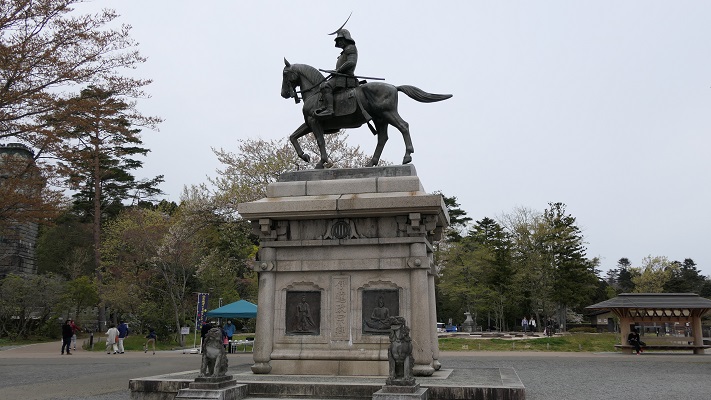
Location and History
仙台は日本の東北地方で最大の都市であるとともに、宮城県の県庁所在地でもあります。仙台の歴史は、仙台城と共に始まりました。この城の創始者、伊達政宗は若く偉大な戦国大名だったのですが、徳川幕府が天下を制してからは従わざるをえませんでした。仙台城は、正宗が居住する城として、3つの候補地から将軍徳川家康によって選ばれたと言われています。
Sendai is the biggest city in Tohoku district of Japan, and the prefectural capital of Miyagi pref. The city started its history with the Sendai castle. The founder of the castle, Masamune Date was a great young warlord, but he had to follow the Tokugawa Shogunate after its unification of the whole country. It is said the Sendai castle was designated for Date to settle from three options by the shogun Ieyasu Tokugawa.

実のところ、戦乱が終息した当時において、新しい城を平地ではなく山の上に設置するというのは大変稀なことだったのです。その中でも本丸エリアの防御力は特に強力でした。本丸の東側は垂直の崖であり、南は川の渓谷に、西は深い山になっていました。北側だけがアクセス可能でしたが、多くの構造物や仕掛けにより敵の攻撃から守られていました。なぜ家康が正宗にこのような強力な城を作らせたのか、明確な理由はわかっていません。
Actually, it was very rare for a new castle to be on a mountain area instead of a plain area at that time when the war was over. The main enclosure “Honmaru” area was strong defensively. Its east side had a vertical cliff, south was a river valley, and west was a deep mountain. Only the north side was accessible, but many structures and devices were set on this side to prevent enemies from attacking. No one can clearly explain why Tokugawa let Date build the strong castle.
城周辺の段彩陰影図(The transparent color shaded relief map around the castle)
というのも、幕府は通常、大名が強力な陣地に立てこもって反乱を起こすようなことは望まないからです。結果的には、仙台藩の2代目藩主は平地である二の丸に移っていきました。そこに二の丸御殿を築いてからは、居住するにも政治を行うにも便利になりました。
Because the shogunate usually didn’t want to have lords get labeled based on a strong site, eventually, the second generation of the feudal domain of Sendai moved to the plain area called “Ninomaru”. After the construction of the Ninomaru main hall, they were able to live and govern conveniently.
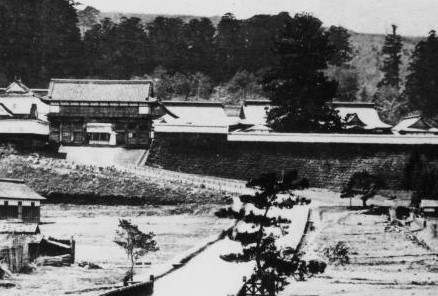
Features
それでは、本丸エリアの北側を歩いて登ってみましょう。最初に大手門跡に立ってみます。そこには特大の門があったのですが、1945年の仙台空襲により焼失してしまいました。現在では、戦後に再建された大手門の脇櫓だけを見ることができます。
Let’s walk up the north side of the Honmaru area. At first, you can try standing on the ruin of the main entrance “Otemon” where a very large scale gate building was located until it was burned down by the Sendai air raid in 1945. The side turret building of the Otemon we can see now was rebuilt after the war.

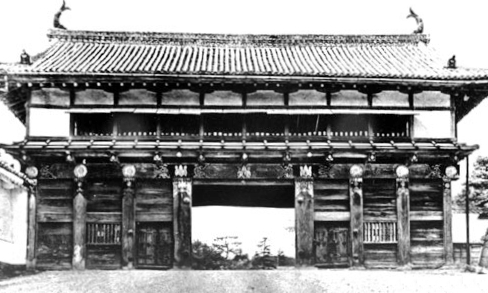

そこから本丸に向かっていくには、急で曲がりくねった道を登っていき、もう一つの門「中の門」を通り過ぎなければなりません。その後、行く手を遮るような高く広い本丸石垣が立ちはだかっているのにびっくりするかもしれません。
Then, you have to climb up a steep and winding road with passing through the ruin of another gate called “Nakanomon” to head towards Honmaru. After that, you may be surprised to see the tall and wide stone walls of Honmaru stand in your way.


過去にはこの石垣の上には、3基の3階櫓が建っていて、攻撃側を迎え撃てるようにしていました。ついには、最後の門である「詰の門」から入れば本丸に到着します。
In the past, three of three story turrets were on the stone walls that would be tough for attackers. Finally, entering the last gate “Tsumenomon”, you will reach Honmaru.


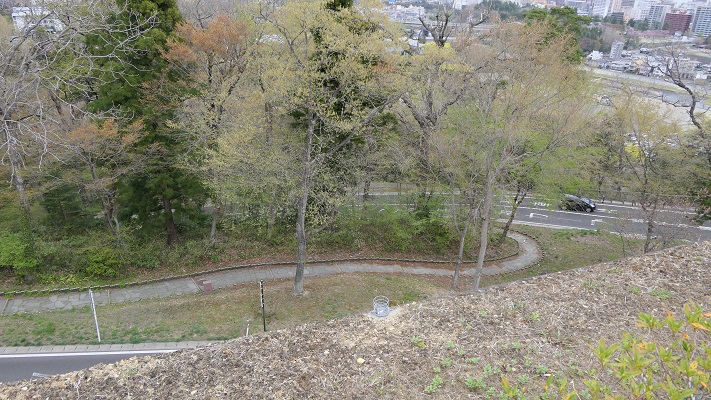
本丸北側の地図(The map of north side of Honmaru)
(マーカーをクリックして地点の名前を確認してください。)
(Please click a marker, and check the name of the point.)
Later Life
明治維新後、日本陸軍の第2師団が司令部をこの城に置き、その時に元あった建物の大半は撤去されてしまいました。第二次世界大戦後は、米軍がこの地区に駐留していました。日本の独立回復後は、本丸地区は仙台市と護国神社が分け合い、二の丸地区は東北大学が使用しています。行政は今、発掘の成果に基づき、どうやって城跡を整備していけるのか慎重に検討しています。
After the Meiji restoration, the headquarters of the Japanese army 2nd division was located in the castle with most of original buildings being demolished. After the World War II, the US army occupied the area then. After the restoration of sovereignty, the Honmaru area is divided by Sendai city and the Gokoku shrine, and the Ninomaru area is used for the Touhoku University. Officials are now considering how they can improve the castle ruins carefully with the achievement of excavations.
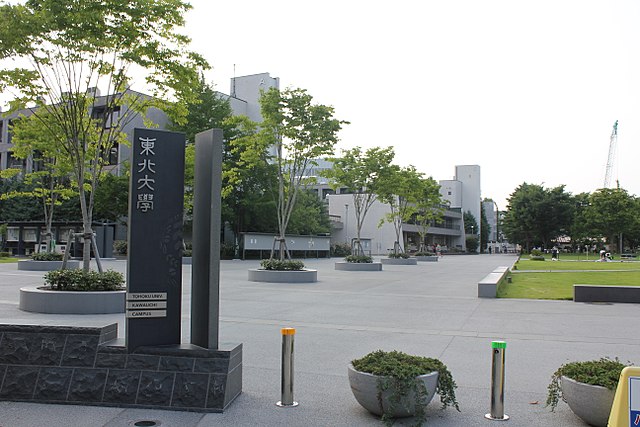
My impression
今現在、仙台駅からバスや車を使って本丸地区に行くのはとても簡単です。そこでは、素晴らしい景色や伊達政宗の銅像を見ることができます。でも、当方としてはそれだけでは仙台の町や城を知るには不十分だと思います。1時間程かかりますが、仙台駅から城跡まで歩いてみてはいかがでしょう。
Now, it is very easy for anyone to access the Honmaru area from the Sendai station by bus or car, there you can see the great view and the bronze statue of Date. But I think that is not enough to know about the Sendai town and castle. I recommend walking from the station to the castle ruins of about one hour.
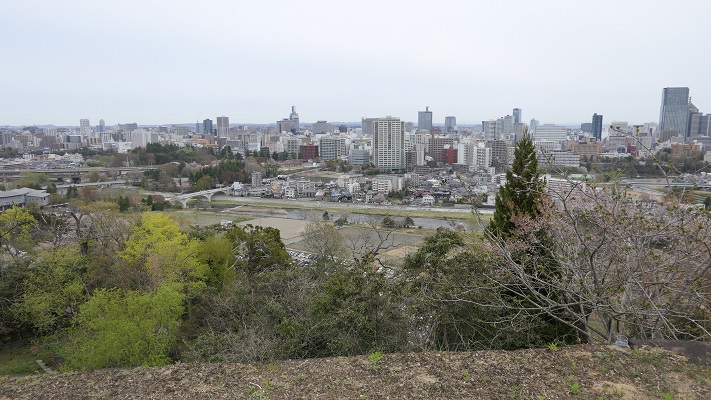
仙台駅の北側にあるパルコ・ビルディングの反対側から始まるクリスロードをまっすぐ進んでください。この通りは何百件もの店舗からなるアーケードになっていて、買い物も楽しむことができます。
Go straight to the Clisroad which starts from the opposite side of the Parco building near north side of the station. The road is an arcade with hundreds of shops, you can also enjoy shopping there.

そのまま進むと、広瀬川にかかる大橋に着きます。そこを渡れば大手門跡に到着です。参考として、城跡の近くにある地下鉄東西線の国際センター駅から歩くこともできます。
It will lead you to the Ohashi Bridge across the Hirose River. You will reach the ruin of Otemon. In addition, you can also walk from the International Center station on the Tozai subway line near the ruin.
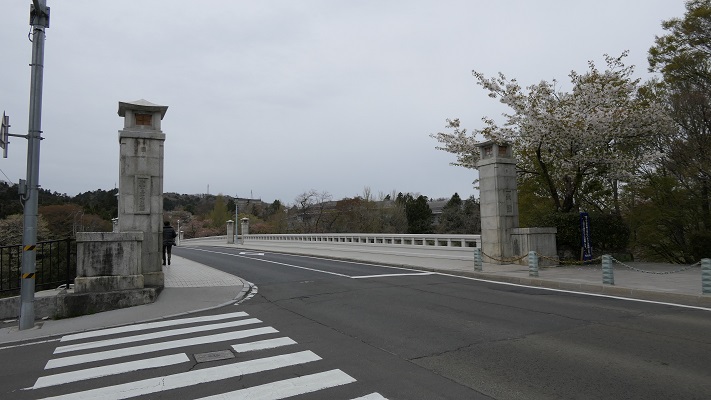
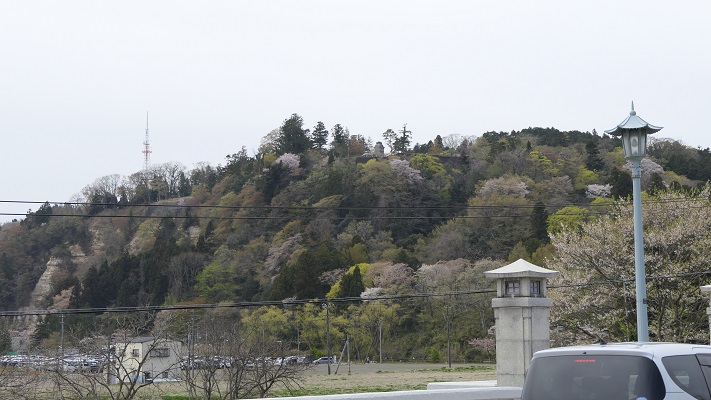
赤い線がお勧めルートです(The red line shows the recommended route)
How to get There
仙台駅からバスで行きたい場合:西口バス乗り場から出ているループル仙台バスに乗ってください。(ピーク時には15~20分毎)
国際センター駅から歩きたい場合:仙台駅から地下鉄東西線に乗り換えてください。
東京から仙台駅まで:東北新幹線に乗ってください。
If you want to go there by bus from Sendai station: Take the Loople-Sendai bus that comes every 15 or 20 minutes at the top of the hour at the west entrance bus pool.
If you wish to walk there from the International Center station: Take the Tozai subway line from the Sendai station.
From Tokyo to Sendai st.: Take the Tohoku Shinkansen super express.
